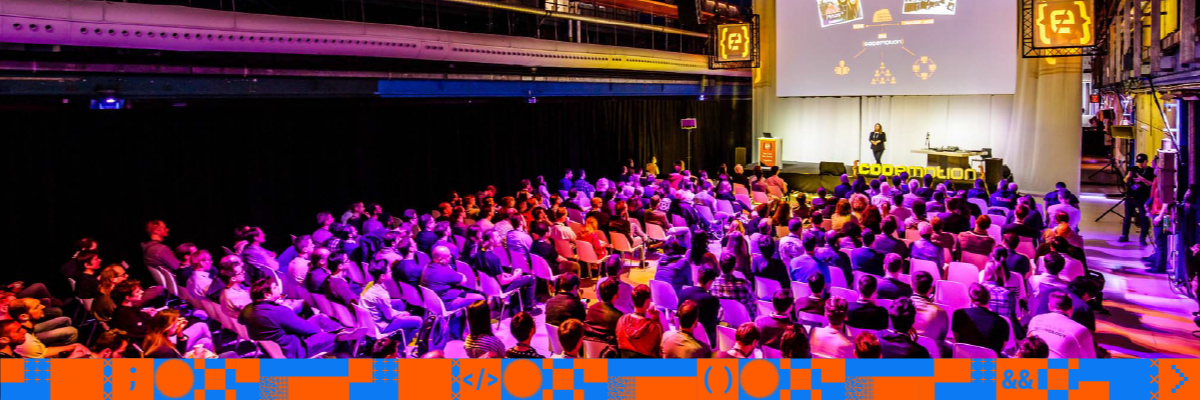Panel: Sustainable Cloud Computing: ownership, mission, and target

Codemotion conference, 19/10/2022 Milan
with Serena Sensini, Andrea Tosato, Chiara Muzzolon
Le parole “ecologia” e “sostenibilità” sono diventate negli ultimi anni parole chiave e, giustamente, soprattutto a causa dell'accelerazione della crisi climatica globale. Le aziende di tutto il mondo riconoscono la necessità urgente di agire sul cambiamento climatico e molte si sono impegnate a fissare obiettivi climatici, anche nel settore IT.
Come può, in questo senso, il cloud accelerare un processo che sia più sostenibile?
Insieme agli/alle ospiti che ci faranno da panelist, raccontiamo i diversi volti della sostenibilità e in che modo il cloud e le aziende, tra cui i cloud provider, possono fungere da acceleratore per lo sviluppo sostenibile inteso come equilibrio tra aspetti sociali, economici e ambientali.
Among many interesting questions explored during the panel, three captured my attention. Here there is an english summary of my answers.
The word "sustainability" often refers to the concept of green and ecology, but its value is much broader: what does it mean, socially and economically speaking, for a company to be sustainable?
Being sustainable means being able to continue operating in a framework of great uncertainty that is both economic, energy and environmental. The step we are called upon to take is to translate sustainability into resilience.
I think it is useful to look at the challenges that cloud providers have faced recently to better understand the issues that everyone will have to deal with in the future.
In just 10 months, 2022 has already stood out as a watershed year.
Before 2022, the discussion about green cloud computing was, yes, fashionable, but more as an outline commitment, more as a goal than a practice.
Needless to deny then that green-washing played no small part in the newfound sensitivity of many companies. At best, however, the goal was to reduce CO2 emissions for the sake of the planet and its inhabitants.
The underlying message of cloud providers was precisely "we are committed to becoming greener because we are good."
A mainly theoretical discussion, in short, with some experimentation and a lot of good will
(see https://www.sciencedirect.com/science/article/pii/S1876610217306331
).
Then came the summer of global drought, "abnormal" temperature spikes and problems at Google and Oracle's London datacenters.
All it took was two incidents on exactly the same day - July 19
(see https://status.cloud.google.com/incidents/fmEL9i2fArADKawkZAa2, https://ocistatus.oraclecloud.com/#/incidents/ocid1.oraclecloudincident.oc1.phx.amaaaaaavwew44aa7zoskanlspjh4ll6wxhwxrbkbed4d4cnupxexzqzvlyq) - and the perspective drastically changed.
It went from worrying about how to reduce energy consumption for cooling (which accounts for 40 percent of a datacenter's costs anyway) to how to operate in weather conditions outside operational parameters.
Suffice it to say that for every degree above the programmed threshold, there is an estimated 10% to 15% loss of operational capacity.
For datacenters that were designed only 10 years ago on "normal" assumptions, these "anomalies" translate into contingency plans for the now very near summer.
For new datacenters, or those under construction, it means profoundly revising the design, resulting in rising costs.
The drought then adds further concerns.
Less water means greater difficulty for cooling (wheter it is used for this purpose or as an emergency measure), but also collapse in hydroelectric generation and thus a good chunk of renewable energy.
We have already seen the impact of this in Italy, but countries such as the United States and China have also already reached critical levels of their immense hydro pots.
If we then look at a medium-term horizon, at least in Europe, the war in Ukraine is already having and will increasingly have an impact on operating costs, suffice it to say that for a data center, the energy bill affects between 70% and 80%.
The good news, if we are to find any, is that with the current soaring costs, all the projects to reduce consumption and improve cooling efficiency have moved from the realm of good intentions to that of strategic projects (see https://www.datacenterdynamics.com/en/opinions/the-shock-waves-from-ukraine/ ).
But there is a longer-term picture that we need to take into account.
After the problems of global supply chain disruption caused by the pandemic, the war between Ukraine and Russia and the growing tensions between China and Taiwan are straining both the production of raw materials, machinery, and the chips themselves.
The cloud revolution has been based on three major themes: an interconnected global network and the availability of inexpensive (and now increasingly custom) hardware and economies of scale compared to enterprise data centers.
After the Nord Stream pipeline incident, scenarios of a possible transoceanic "cable war" have become more serious and concrete (see https://www.europarl.europa.eu/RegData/etudes/IDAN/2022/702557/EXPO_IDA(2022)702557_EN.pdf).
The three biggies (GCP, AWS, Azure) have already put their hands forward with respect to "chip shortage" issues and stated that they plan to lengthen server replacement times, estimating to go from an average of 3 years to a horizon of 6.
All of these things have and will increasingly impact costs for end users as well.
If resilience is the key word, doing more (or at least the same) will increasingly be the watchword.
Who can be blamed for sustainability? - ergo: is it really the fault of big business, or should everyone do their part?
One of the positive aspects of this time of crisis is that sustainability has become a necessity.
The issue for me today for any company, large or small, is to find the right skills to whom to entrust responsibility.
The issue and the urgencies are such, at least in Europe, that it cannot be approached superficially.
How do large companies (from the IT world, in this case) approach the issue of sustainability and smaller ones? How do the goals change and what issues are felt to be most urgent? How to measure up?
The challenge is to rethink everything in terms of resilience and efficiency.
Companies to some extent have already been testing their resilience (in terms of workforce) with COVID.
It was first and foremost an organizational challenge where technology, networks and the cloud made a crucial contribution.
Now it is about thinking in terms of efficiency.
Energetic, first of all, but also of processes, and of the use of technology itself.
I see a positive return to the efficiency theme in software development as well.
After the "hangover" of cloud computing with its "unlimited" resources, we are, paradoxically, returning a bit to the basics, when resources were "always" limited and a large part of a programmer's job was just figuring out how to make the most of them and squeeze every last bit available.




